The Supermarket Olive Oils to Avoid!
Thursday, April 28, 2022
Extra virgin olive oil is one of the most valued foods by many consumers, especially myself. The food that some call liquid gold is certainly not lacking in most households, especially in Spain. And every time we go to the supermarket we come across more and more brands. Hence, institutions such as the Organization of Consumers and Users (OCU) periodically prepare lists with the best oils that can be found in establishments.
However, we are not here to review the oils best valued by the OCU, quite the contrary. Below we will see some of the worst valued extra virgin olive oils by the OCU experts that should be left on the shelf and as far away as possible from your shopping basket.
To prepare the list, the OCU took into account the labelling, the authenticity (that it does not contain other oils), the level of acidity, the quality of the fruit and the organoleptic qualities - sensory analysis.
So here we go:
1. Olisone (Lidl) Extra virgin olive oil
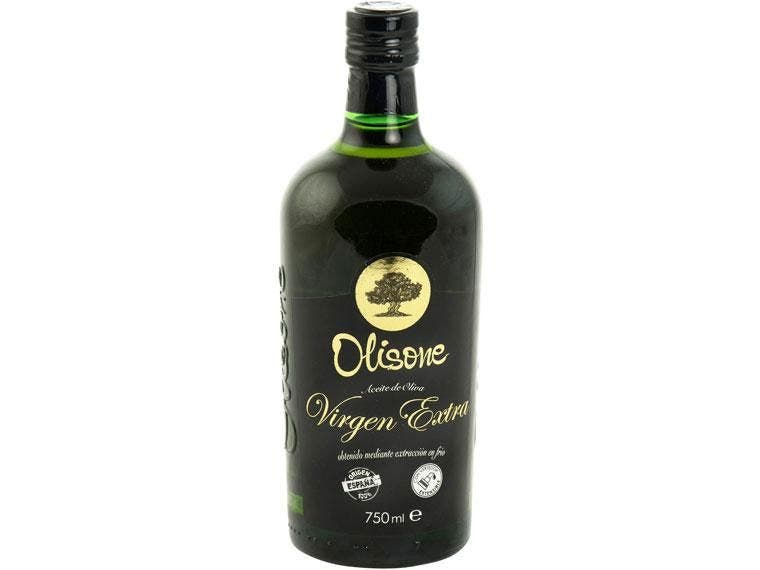
It is the worst rated. According to the OCU, it is the worst quality oil that can be found on the market. It obtains a score of less than 32 out of 100 due to labelling, conservation parameters and sensory analysis. Each 0.75-litre bottle costs 3.69 euros. I can also testify to this. It is really awful. I bought it once and never again.
2. La Española Extra Virgin Olive Oil

This again gets a score of 32 out of 100 and is not actually considered an 'extra virgin'. It is considered a product of very poor quality, although it should be noted that it is the only product from La Española that has such a low score. It can be found for 4.96 euros per container.
3. Olisone (Lidl) Extra virgin olive oil

It is for sale at Lidl and its price is €3.89. The reason why the OCU considers it a lousy oil is its sensory analysis, one of the requirements considered essential to be able to classify an oil EVOO.
4. Guillén Extra virgin olive oil
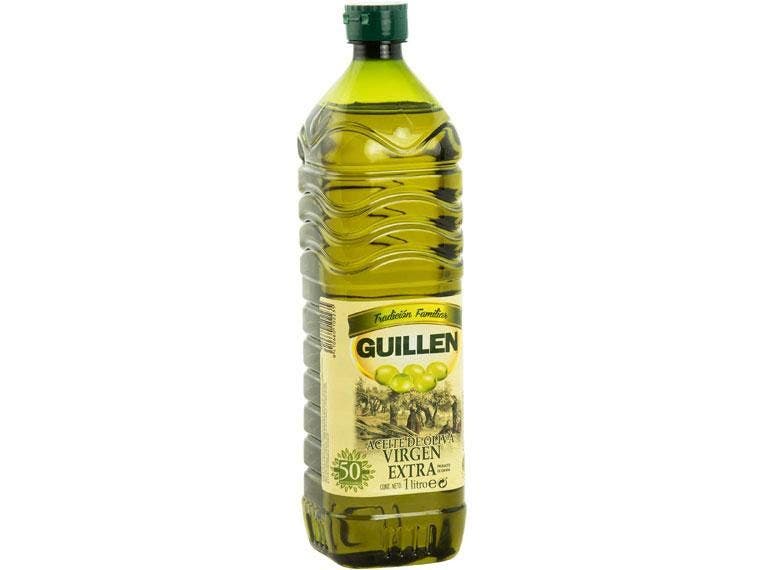
This oil is an extra virgin, but it is extremely poor quality. The worst factor here is the labelling and the conservation parameters. It has good scores in terms of acidity, however, its authenticity is the key reason why this oil has failed so badly and also its sensory score. That is why it also gets a 32 out of 100.
5. Olearia del Olivar (Aldi) Extra virgin olive oil
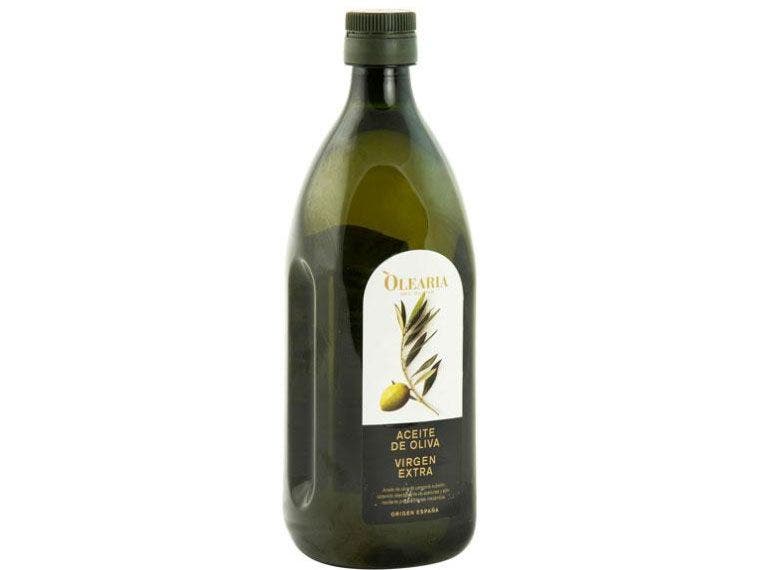
You can find it in Aldi supermarkets. In the sensory part, it only gets 2 out of five stars, while the labelling is only 3 out of 5. Although its conservation is good, its labelling has very little information, which is why it also gets 32 points out of 100. Not good either! Its price is 3.89 euros.
6. La Masía Extra virgin olive oil excellence
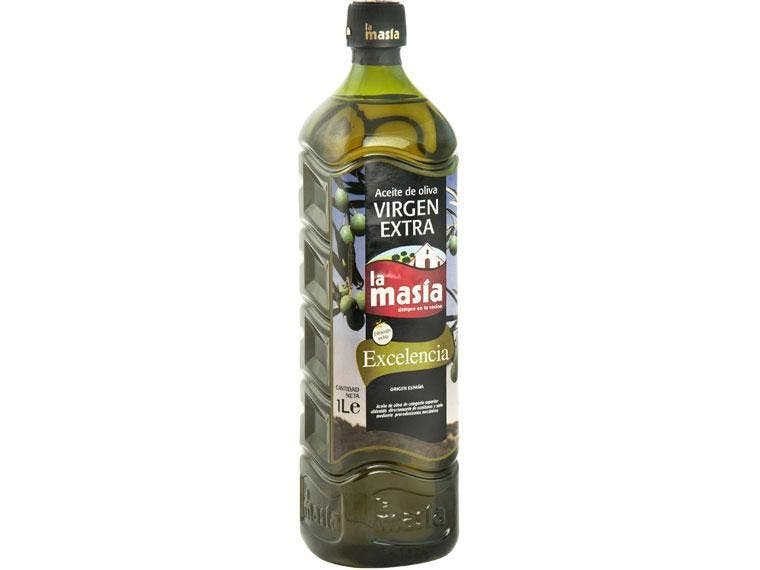
This is not considered an extra virgin, despite the fact that the label indicates it. In the sensory section, it gets two out of five stars, and despite the fact that it has the highest score in the acidity section, this is not enough to save it from a score of 32 out of 100. And its price is 4.49 euros.
7. DIA Extra virgin olive oil, glass
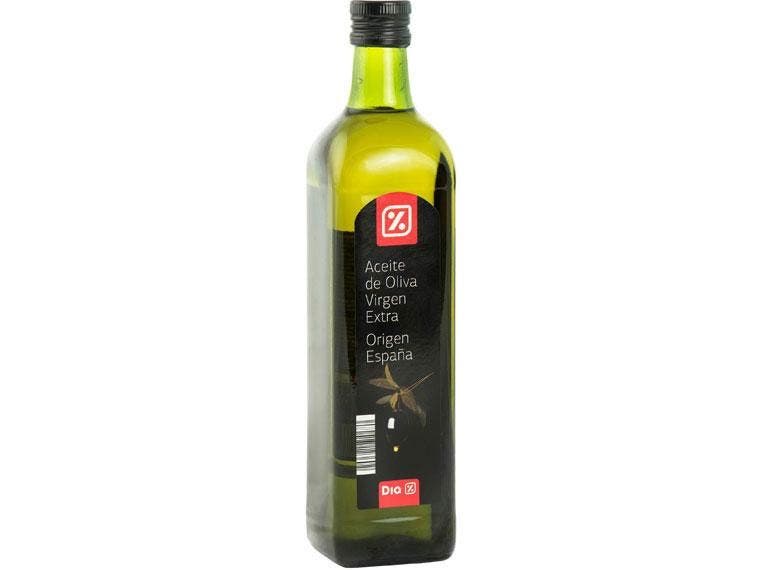
The list is completed by three Dia oils, unfortunately for this supermarket chain. The first is this, which does not exceed 32 points out of 100 and the OCU says that it does not meet the requirements to be classified as an extra virgin, since it does not conclusively pass the sensory analysis tests like many others in this list. Its price is 3.32 euros.
8. DIA Fruity extra virgin olive oil
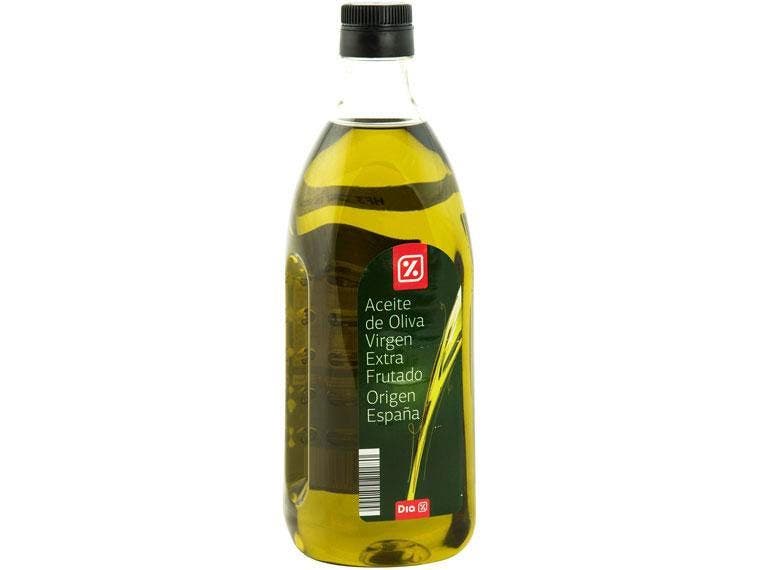
This oil obtains a score of 32 out of 100 and is not considered an extra virgin either for its organoleptic qualities. An oil that the OCU bluntly refers to as a "bad quality oil" and that has a price of 3.63 euros.
9. DAY Extra virgin olive oil

Its price is 3.63 euros and it gets the same score as the previous ones. The olives with which it is made remain at 4 stars out of 5 but it fails in the sensory analysis. It is the oil that closes this list, one of which no oil would want to be part of, and in the words of the OCU itself, would not advise you to buy.
So, if you have been using any of these oils, I highly recommend you start looking elsewhere and really discover what an EVOO should taste like. I have published many recommendations in my blog but here is a safe bet on sale in Mercadona
 2
Like
Published at 8:24 PM Comments (2)
2
Like
Published at 8:24 PM Comments (2)
The Best Tortilla in Spain, and how to make it.
Friday, April 22, 2022

Talking about potato omelette is opening a debate in which everyone can give their opinion. For better or for worse, you may be more or less of a fan of this popular dish, but on occasions, I am certain you have tried it.
Being a flagship dish of Spanish gastronomy has always put the tortilla in the spotlight, being a source of permanent debate due to its ingredients or its method of preparation.
You may prefer it more or less cooked, with or without onion, with breakfast or dinner... but when you find your favourite place to have an omelette, it doesn't matter what time of day it is, because any time is good enough to enjoy it.
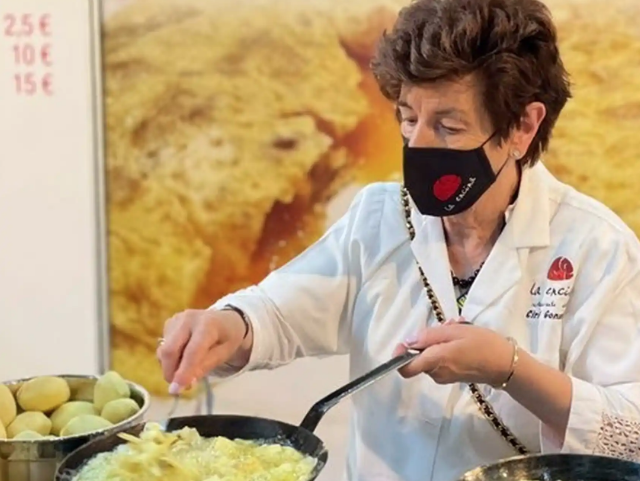 "Without potatoes and baked": this is the recipe for the first tortilla that dates back to 1798. But, if there is someone who knows about tortillas - and a lot - it is Ciri González, in charge of La Encina, a restaurant in Palencia whose tortillas are among the most sought after in the country. "Without potatoes and baked": this is the recipe for the first tortilla that dates back to 1798. But, if there is someone who knows about tortillas - and a lot - it is Ciri González, in charge of La Encina, a restaurant in Palencia whose tortillas are among the most sought after in the country.
When you are good at making tortillas, you are good at it, and there is no more discussion, and that is the case of Ciri Gónzalez, who has won no less than four times the recognition for the best tortilla in Spain.
La Encina is the only restaurant that has won the award for the best omelette in Spain four times at the Best of Gastronomy Congress (2000, 2002, 2008 and 2021). They pride themselves on their recipe and technique.
The acclaimed tortilla at this Palencia restaurant is made with simple ingredients and a lot of love, where Ciri González adds the necessary touches of experience.
But how do they differentiate themselves? To prepare this recipe, at La Encina they use potatoes from La Ojeda in Palencia, a small amount of onion from Palenzuela, extra virgin olive oil, plenty of eggs, a pinch of salt and the grandmother's special frying pan. The result is a delicacy for the senses. Cooked on the outside but moist and slightly runny on the inside enabling that perfect transfer of flavours to the palette, delicate flavours which are totally lost when the tortilla is completely cooked through.
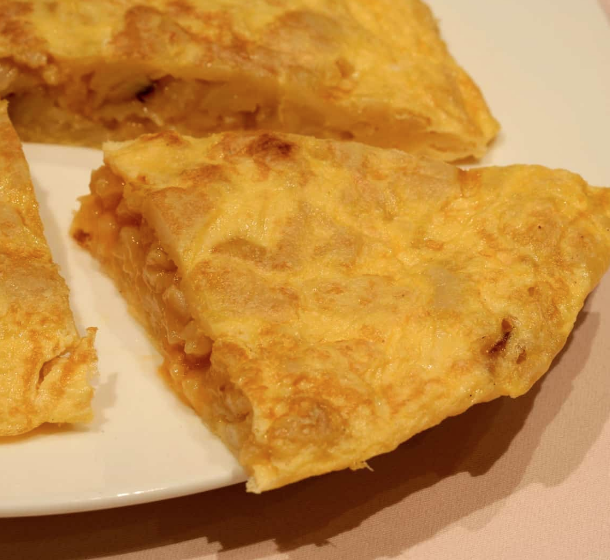
In addition to tortillas, at La Encina, you can find a wide variety of traditional dishes in a cosy dining room where we can enjoy an informal snack or a classy meal. One of their specialities is crispy roast leg of lamb.
If you are not fortunate enough to visit Valencia and taste this unbelievable tortilla for just €2,50.
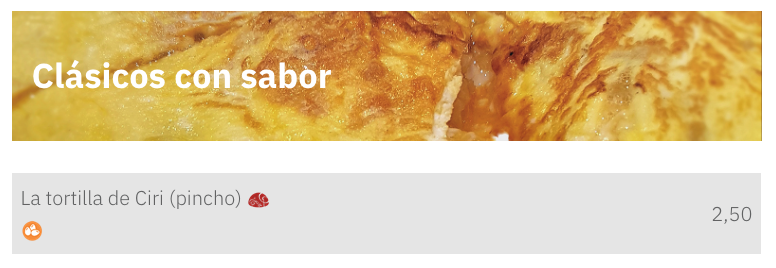
This is the recipe for the best Spanish Potato Tortilla that is served to their guests:
Ingredients:
500 grams of Ojeda Potatoes (a local variety of New Potato)
8 Eggs
¼ Palenzuela onion (a local variety)
Olive oil
Salt
Recipe:
First, we peel and cut the Ojeda potatoes (a variety of New Potato) into uneven slices and finely chop a quarter of the Palenzuela onion. Once ready, we season the potatoes before starting to fry them in plenty of olive oil.
To fry the potato, place the pan with olive oil over high heat. You start with a lot of heat but gradually lower the temperature. The objective is that the potato is fried and not cooked. We will have the potato over the heat for more or less 20 minutes. Once the temperature of the oil has dropped slightly we can add the onion. Test the oil with a small piece of onion first to make sure it doesn't burn the onion. After the first ten minutes, turn over the potatoes so that they are golden brown on both sides. Once fried, they are removed and put in a colander to release the oil.
Now, the eggs must be beaten at room temperature. Once beaten, it is mixed with the potato and the fried onion, and it is left to macerate for a few minutes.
Finally, put a frying pan over high heat with a few drops of oil and pour in the mixture. After a few moments, just enough for the tortilla to brown, turn it over and remove the tortilla from the pan. Again, they are poured back into the pan with a few drops of oil to make the tortilla on the other side. In the same way, it is left over the heat for a few moments, in this way the potato omelette will develop a cooked outer shell so to speak but will be moist and slightly runny on the inside. Be careful not to cook it all the way through. It will take practice to hit the sweet spot!
 4
Like
Published at 2:51 PM Comments (4)
4
Like
Published at 2:51 PM Comments (4)
Spanish Pork in Tomato Sauce - Magro en Tomate
Monday, April 11, 2022
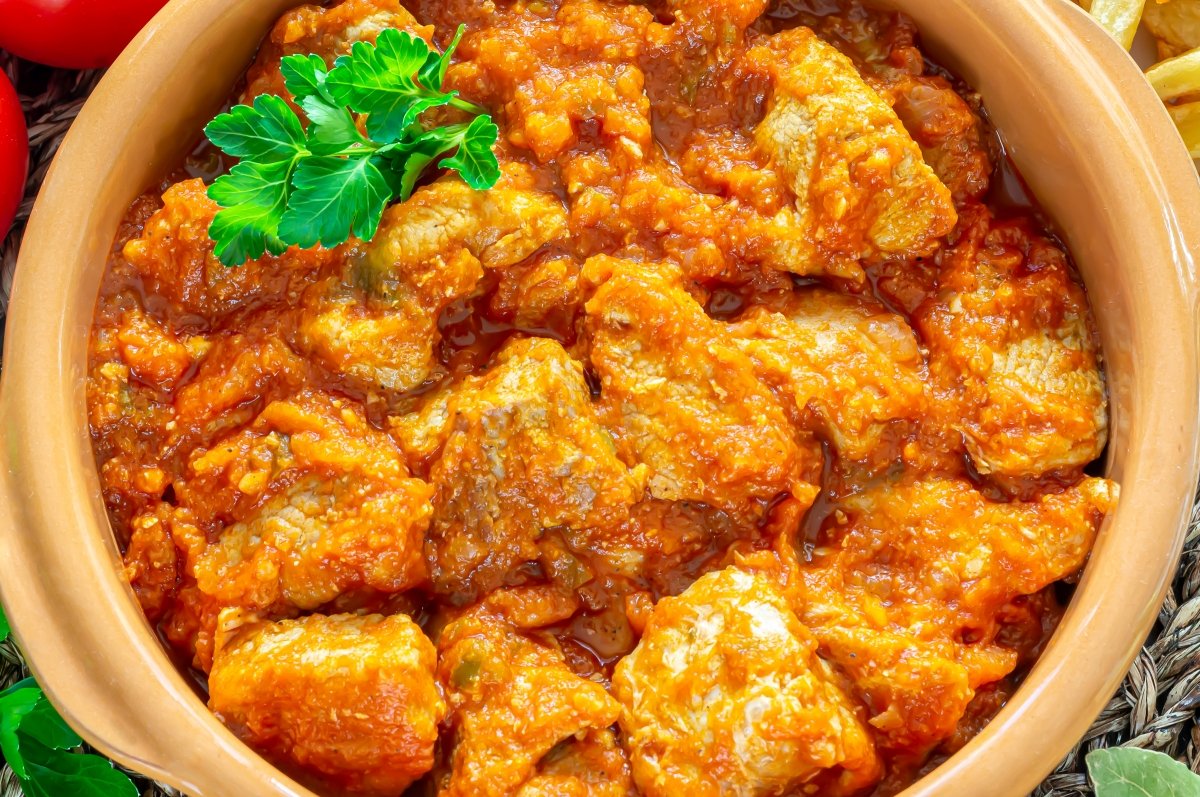
Pork in tomato sauce is one of the many traditional dishes of Spanish cuisine that is made throughout the length and breadth of the territory. With a few very cheap ingredients, you can enjoy this dish either at home, or at the bar as an appetizer or tapa, and always, of course, with a good piece of crusty bread to dip in the sauce.
Preparing it is very easy since it basically involves cooking the meat with a decent amount of tomato. The quality of the latter is important though.
It is important to get some very ripe tomatoes or a very good tomato preserve. During cooking, the sauce is concentrated and reduced while it is impregnated with the juices of the meat, giving it that characteristic flavour that is so popular. In addition, this is one of those stews which tastes even better if you let it rest for a whole day.
To accompany it, you can have white rice for example or even a portion of good chips. Other accompaniments that are common, especially when eaten as a main dish, are fried eggs and fried green peppers, which help to fill out the meal.
Getting hungry?
BASIC INFO:
Preparation time: 10 minutes
Cooking time: 1 hour 10 minutes
Total time: 1 hour 20 minutes
Ingredients for 4 people
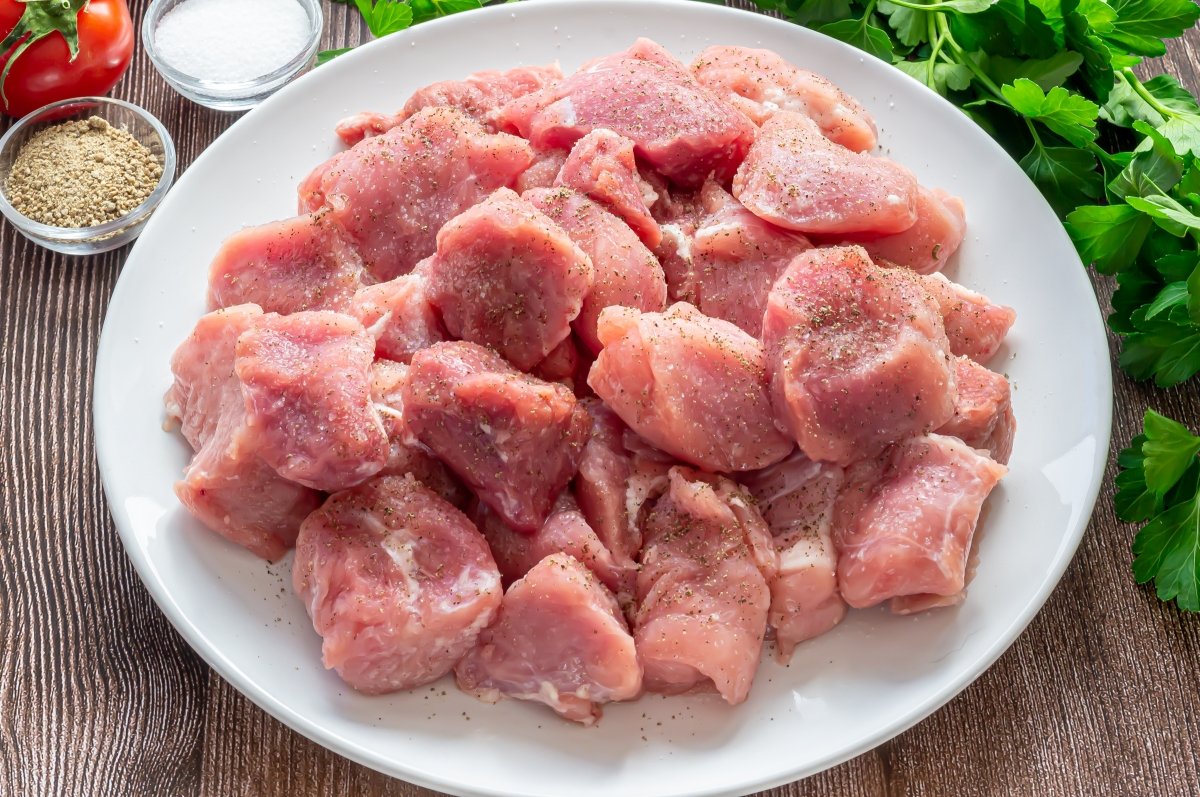
800g lean pork meat, chopped
Salt
Ground black pepper
1 large onion
1 Italian green pepper (optional)
4 cloves of garlic
800 g of very ripe natural tomato or canned
4 tablespoons olive oil
150 ml of white wine
1 or 2 bay leaves
parsley (optional)
Sugar (optional)
STEPS:
To prepare this fantastic recipe, we need 800 g of lean pork meat, chopped and ready to cook. However, first, we are going to check it to remove any excess fat that has remained. Generously season with salt and pepper and let it stand while we prepare the vegetables.
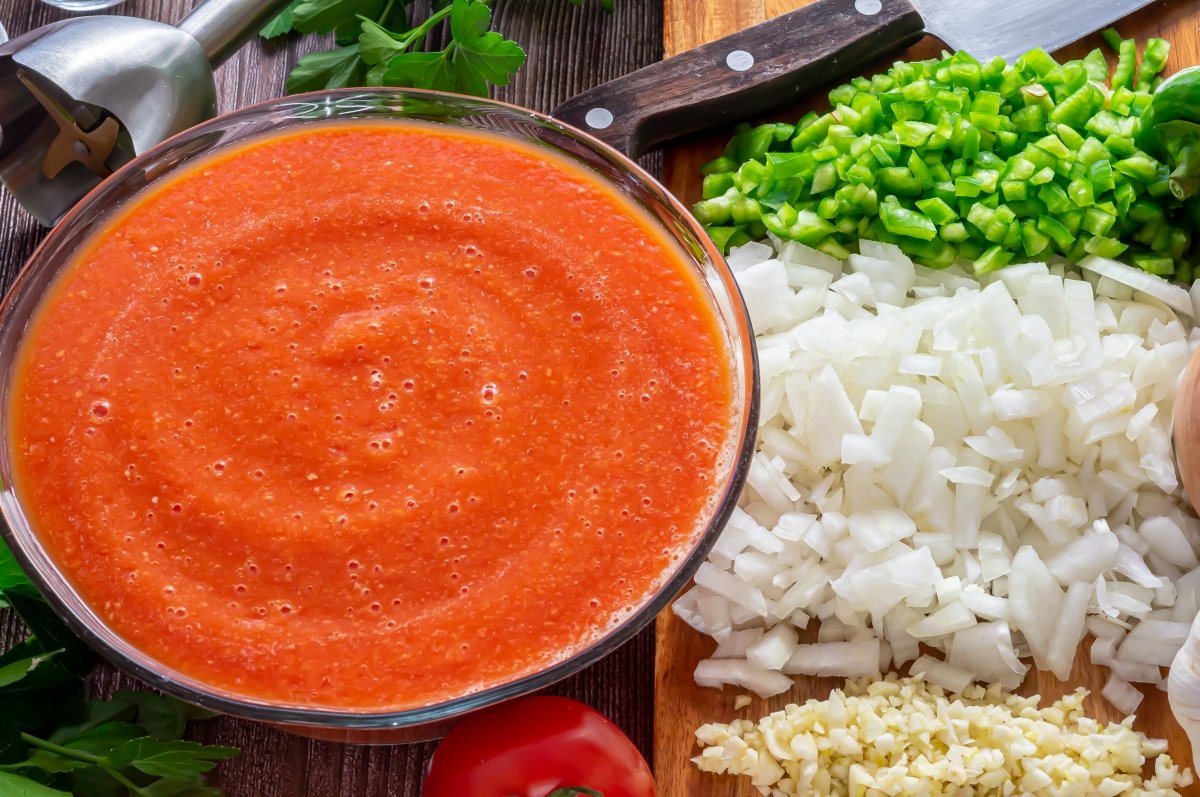
Take 1 large onion, peel it and chop it finely. Optionally, in season, we can add 1 Italian pepper. In this case, we remove the stem, open it in half lengthwise and remove the seeds. We chop it very finely. We also need 4 cloves of garlic, peeled and finely chopped. Finally, we crush 800 g of tomatoes, which can be natural or good quality canned tomatoes. In the first case, we will make sure that they are fully ripe, wash them and remove the stem. To remove the remains of the skins and seeds, pass the tomato through a chinois or fine sieve, pushing with a mortar pestle or with the back of a spoon
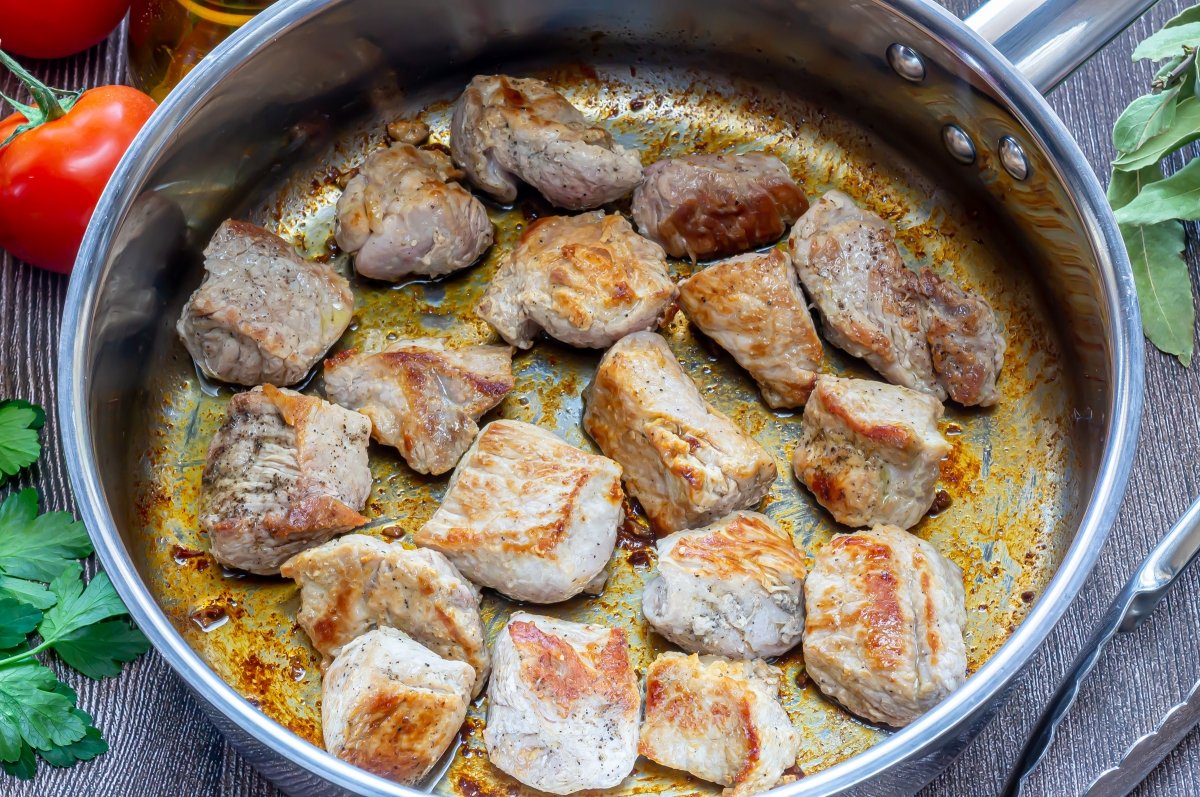
Heat a large skillet or pan with 1 tablespoon of olive oil. When it is very hot, but not smoking, brown the meat over medium-high heat, until browned on all sides. We will do it in two batches because if we put everything in at once the pan will fall in temperature and it will take longer to cook and brown the meat. As the pieces of meat brown, we remove them and put them to one side.
We lower the heat and finish adding the other 3 tablespoons of oil we need. In it we are going to fry the onion with the pepper over medium-low heat, stirring frequently so that it does not burn. We want it to be very poached so we will cook it for about 10 minutes or so.
Once they are very soft and transparent, add the garlic and mix. Let it cook for about 1 minute. At that time, we put the meat back in the pan or pot, along with any of the juices that it may have released, and soak it with 150 ml of white wine, I like to use a Verdejo. Next, we turn up the heat and let it cook so that the alcohol in the wine evaporates. It will take a few minutes.
Cover the meat with the blended tomato. Also add one or two bay leaves, which will give the sauce a very rich flavour. Let it heat up until it starts to bubble. At that moment and before it starts to spit, lower the heat and let it simmer for between 30 and 45 minutes until the tomato has thickened and the meat is tender. To avoid the tomato spitting everywhere, cover the pot with a fine mesh cover, which also allows the sauce to evaporate.
Finally, taste the sauce and rectify with salt and pepper if necessary. We can also add a little finely chopped parsley. Optionally, you can reduce the acidity of the tomato sauce with a little sugar during the cooking stage but check this halfway through. However, if very ripe tomatoes are used and the onion is well poached, it may not be necessary to add any sugar.
Good Luck
 1
Like
Published at 5:00 PM Comments (3)
1
Like
Published at 5:00 PM Comments (3)
Fig & Duck Pastries - Hojaldre de Pato e Higos
Tuesday, April 5, 2022
Duck is one of my favourites and has always been the protagonist of some of the legendary dishes from countries such as France or China. However, duck also has its place in Spanish cuisine, although it may not be one of the great protagonists. It is very popular in the region of Murcia where it is cooked with mushrooms, garlic or onion sauce and is often included in Paellas in the southern part of Valencia.
However, the recipe I want to share with you today is not traditionally Spanish by any means, but it was a Spaniard who showed me it and I just had to share it with you. One, because it is pretty simple and two because it’s just so incredibly tasty and it will make you into a star cook at any dinner party! This recipe can be the main course if you make large pastries or a starter if you prepare smaller pastries, either way, you are assured to conquer both family and guests.
Duck & Fig Pastries
Ingredients: 2 portions - starter - 4 small pastries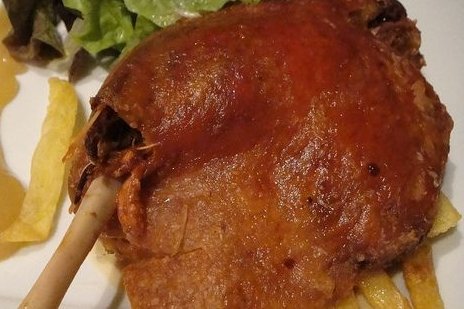
Duck Pastry:
1 duck confit (thigh)
4 sheets of Brick pastry
1/2 onion
1-tablespoon butter
1/2 cup orange juice
2 tablespoons sugar
Pepper, salt and rosemary
Fig sauce:
4 fresh figs
1 large glass Tawny Port
Salt and pepper
Plate dressing:
Assorted lettuces
2 cherry tomatoes
2 figs
Oil and balsamic vinegar
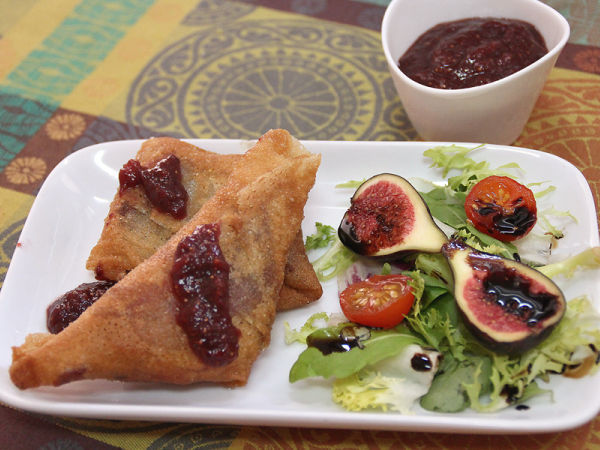
Preparation:
Step 1:
Clean the fat off the duck confit and put it in a baking dish with the orange juice and a couple of sprigs of fresh rosemary. Leave it in the oven at 180 ° C, skin side up for about 15 minutes or until the skin is brown and crispy. Remove and let it cool down. Save the juice, which has been released.
Step 2:
In a small saucepan, we place 4 fresh figs (straight from the tree!), cut them into small pieces, add the port, add salt and pepper to taste and let it simmer for 15 minutes. Remove from the heat, blend it thoroughly and pass it through a medium grain sieve. Put to one side.
Step 3:
Cut the onion into thin strips and brown with a little butter in a pan when it turns transparent when we add 2 teaspoons of sugar, braise and add half a glass of water. Leave it for ten minutes at medium heat or until the liquid has evaporated. Place to one side.
Step 4:
Debone duck thigh, which should be cold, and shred the skin and flesh into four lots that make up the filling for the pastries. Place each pile on a sheet of brick (filo) pastry with a spoonful of caramelized onions and close it as you wish, I did triangles, more or less... Fry them in very hot oil, just enough time so that the pastry goes golden brown and crisp. (Test the oil with a little bread before popping in the pastries; the bread should sizzle quickly) Let them stand for one minute on absorbent kitchen paper before serving.
Step 5:
To serve, place two duck pastries per dish with a little fig sauce. Add a selection of lettuce and a cherry tomato with a fig cut in half. Dress with a little dripping from the roasting tray, and drizzle some balsamic vinegar over the lettuce. Serve warm in a bowl with the remaining sauce.
Finally, open a good fruity Ribera del Duero Crianza, and enjoy…
 0
Like
Published at 9:20 PM Comments (0)
0
Like
Published at 9:20 PM Comments (0)
Spam post or Abuse? Please let us know
|
|